Raglan Castle was one of the last medieval fortresses to be built in Wales. The majestic castle is now ruined but much of the stonework remains and is most striking against the rural surroundings in Monmouthshire, Wales. Following the civil war Cromwell ordered the castle to be completely demolished but the castle defeated the workers and they gave up.
| Built | 15th Century |
| Condition | Ruinous – Major stonework intact |
| Ownership | Somerset family but maintained by Cadw |
| Access | Public – Admission fee |
| Postcode | NP15 2BT |
Click here to explore Raglan Castle with us and discover its history
It is believed by some historians that following the Norman conquest, there was a motte and bailey castle on the site built by William FitzOsbern. This is supported by findings by archeologists when they discovered the remains of a possible bailey ditch.
The Bloet family owned the local manor from the late 12th century to the late 14th century and during this time they constructed a manor house on the site, surrounded by a park.
Sir William ap Thomas was responsible for beginning the construction of Raglan Castle in the 15th century. In 1432, he purchased the manor of Raglan, where he had previously been residing as a tenant. From then on, he embarked on an ambitious building program that resulted in the basic shape of the castle that we can see today.
Sir William ap Thomas constructed the impressive Great Tower at Raglan Castle. This moated, five-story hexagonal tower sits outside of the main castle and can only be accessed from within the castle via a bascule drawbridge. The tower served as a self-contained living quarters and hospitality space, complete with a kitchen and other amenities. It was surrounded by a protective apron wall and moat, and studded with arrow-loops for defence. The tower was so striking that it became known as the “Yellow Tower of Gwent” and was visible for miles around in the Welsh countryside.
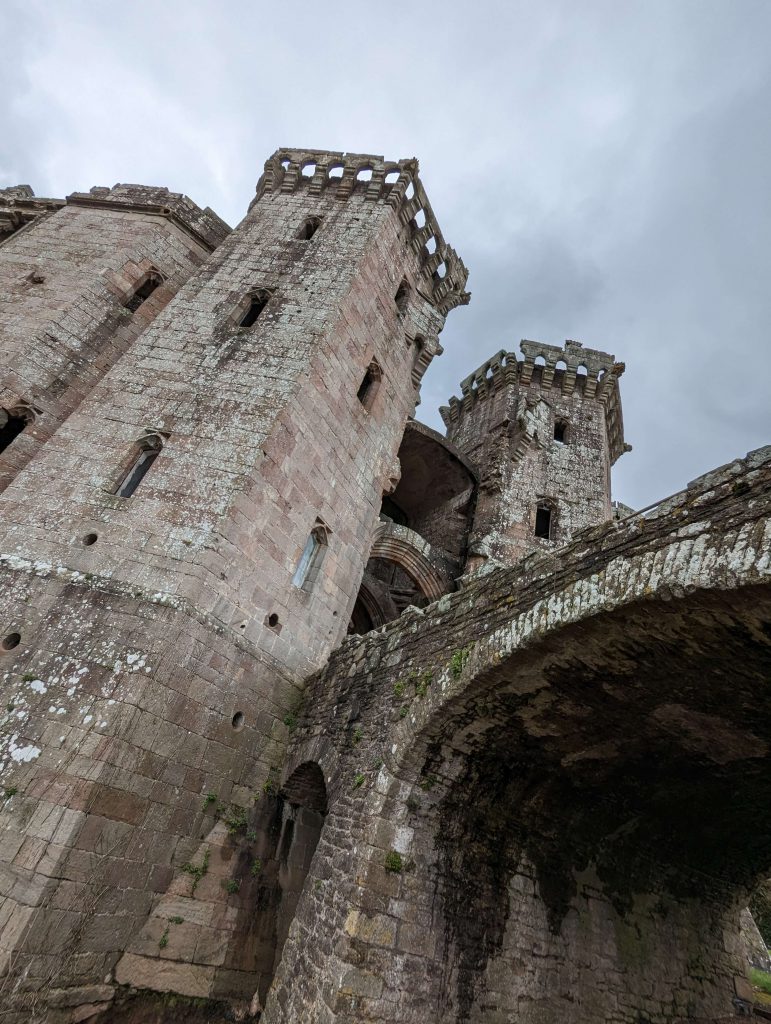

In 1445, Sir William died and the castle passed to his son William Herbert. William Herbert was a supporter of the House of York during the Wars of the Roses and was granted the title of Baron Herbert of Raglan by King Edward IV in 1461. He was later made the 1st Earl of Pembroke in 1468, as a reward for his capture of Harlech Castle, the last Lancastrian stronghold and William the first Welshman to hold the title of Earl.
Sir William Herbert that in 1462 the young Henry Tudor (future King Henry VII) was entrusted into the custody of William and his wife and to be brought up at Raglan Castle.
Sir William embarked on an ambitious building program to emphasise his new status. As part of this program, he added the impressive three-story gatehouse, which is approached over a stone bridge. The gatehouse is characterised by extensive machicolations and gunloops, and it originally had a twin-set of portcullises and a drawbridge. The gatehouse’s attractive grey brick panelling provides an elegant contrast to the blood-red brick used elsewhere in the castle. The gatehouse was designed to be both defensive and impress visitors, which it still accomplishes today.

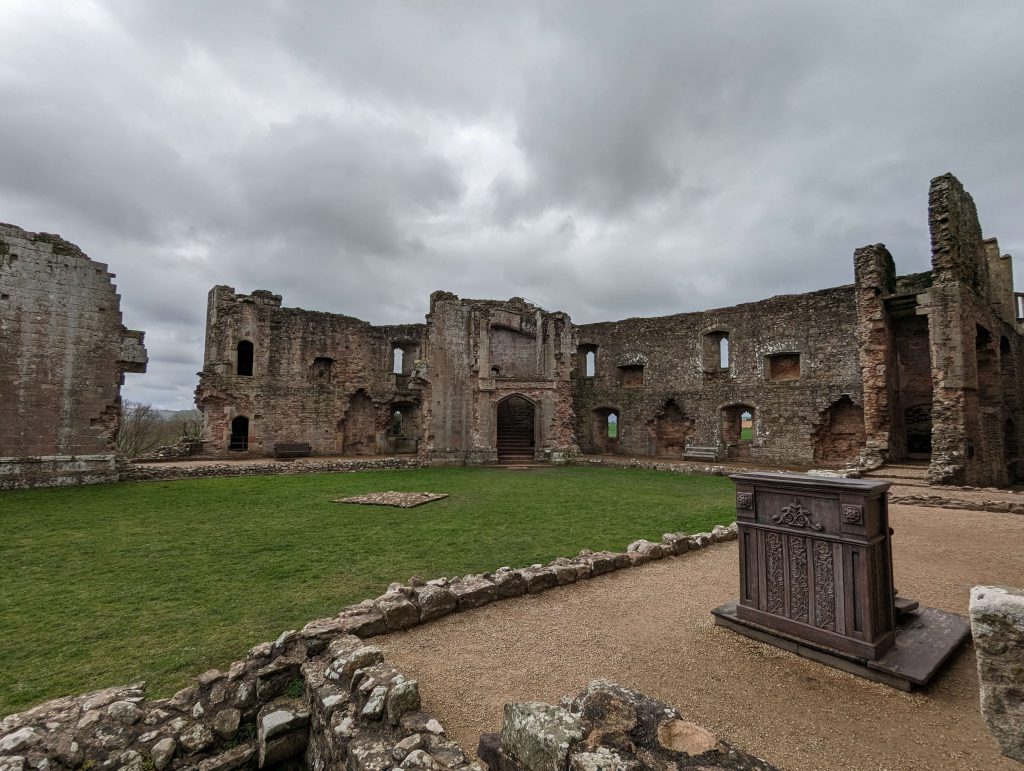
The upper part of the gatehouse served as chambers for the constable of the castle. To the west of the gatehouse was the castle library, which was once renowned for its collection of Welsh literature. On the east side of the gatehouse, there is the three-story Closet Tower, which was designed to be an integral part of the gatehouse. It may have housed the original castle treasury, which was conveniently accessible to the constable.
In addition to the Gatehouse, Baron William was responsible for adding some of the main features of the castle, which included elements of the large Cobbled Court located behind the main Gatehouse. He also added the impressive Fountain Court to the left of the Gatehouse, as well as the chapel and parlour rooms.
After Sir William Herbert’s rapid ascension to power, he met a tragic end when he was captured by Lancastrian supporters during the Battle of Edgcote in 1469 and executed. His death left his impressive building projects at Raglan Castle unfinished, and it was up to his son, also named William Herbert, to resume construction in the late 1470s.
William was only fourteen at the time of his father’s death and could not take control of his estates until 1475. Despite William’s marriage to Mary Woodville, sister to the queen, William never reached the status and influence over national affairs that his father achieved. In 1479, he was forced to exchange his honoured title of earl of Pembroke for the earldom of Huntingdon so that Edward IV could grant it to his son. Under King Richard III he did manage to regain his position as chief justice of South Wales.
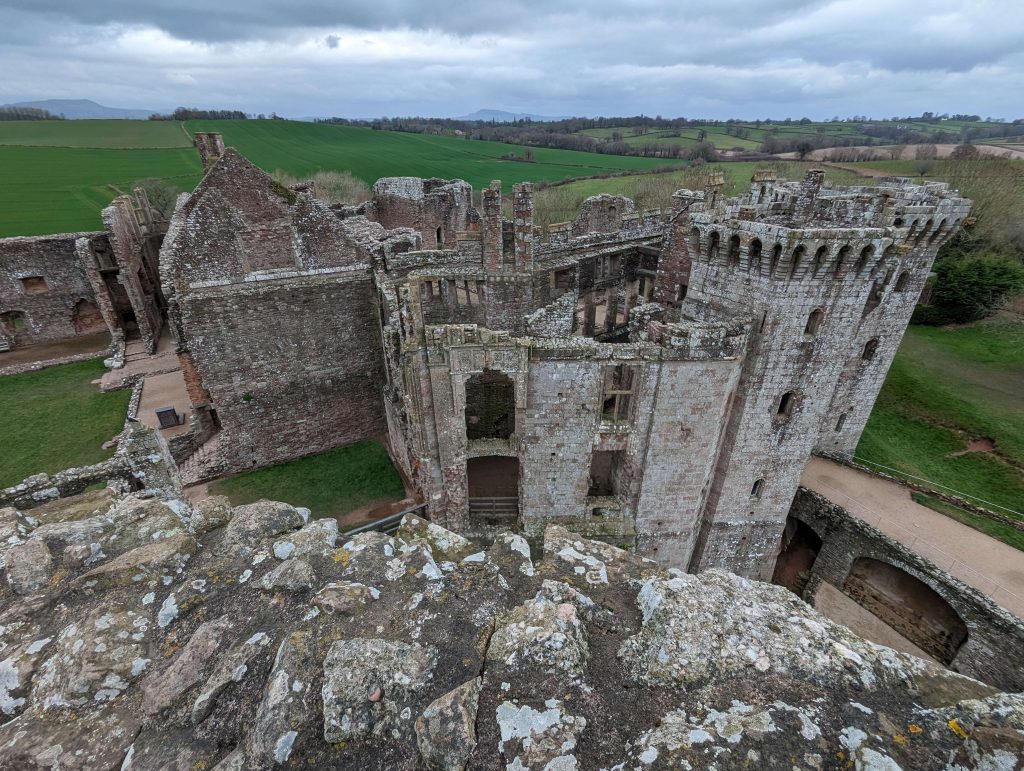
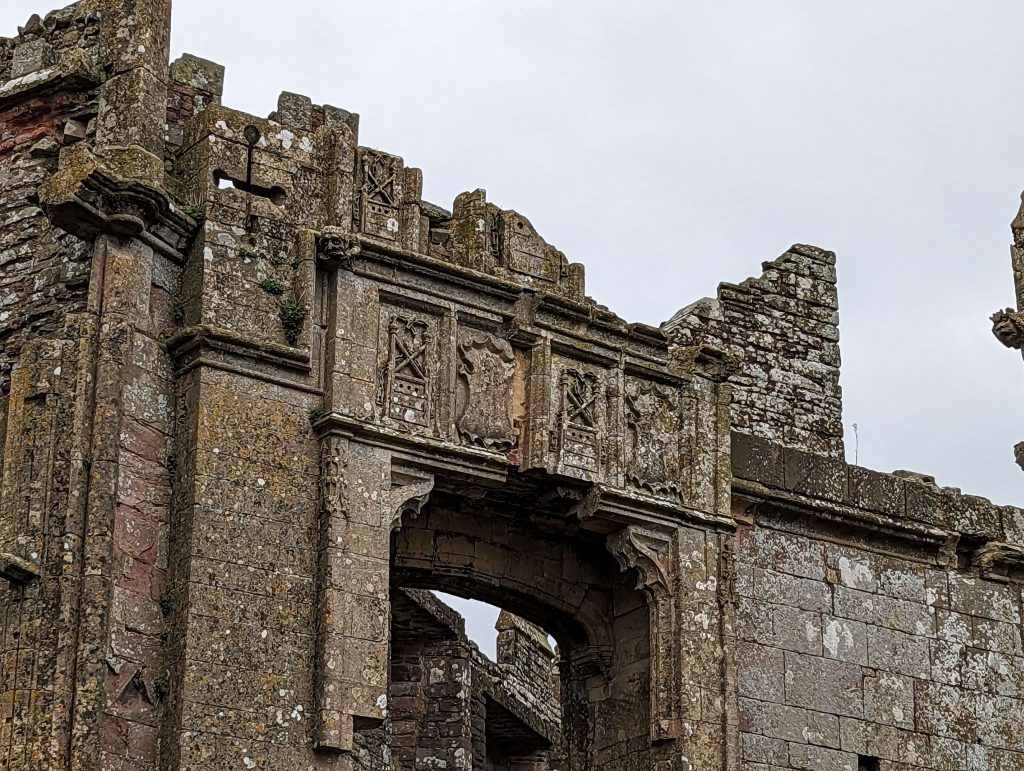
Following William’s death in 1491, ownership of the castle passed to Elizabeth Somerset, the daughter of William Herbert. Elizabeth married Sir Charles Somerset, thereby passing down the castle to a new family lineage. Sir Charles Somerset rose in favour with both Henry VII and Henry VIII and was made the Earl of Worcester.
In 1549, Raglan Castle passed to William Somerset, 3rd Earl of Worcestor and it is credited to William for transforming Raglan Castle from a military fortress into a magnificent Tudor country home. William was responsible for extensive renovations to the Pitched Stone Court, which included the addition of a Long Gallery and the redevelopment of the gardens in the new Renaissance style. The hall was also rebuilt by him as part of these efforts.
The newly rebuilt hall was quite impressive, measuring 64 by 28 feet (19.5 by 8.5 metres) and standing at a height of 42 feet (13 metres). The roof was crafted from Irish oak and illuminated and ventilated by a cupola located at the centre. At the end of the hall, a sizable oriel window provided illumination and may have been adorned with stained glass.
The Long Gallery was a grand feature of the castle, spanning the entire east first-floor of the Fountain Court. Though now in ruins, it would have served as a display of the earls’ wealth and power. Stretching a length of 126 feet (38 metres), the gallery was likely panelled with wood and adorned with tapestries and paintings during the Tudor era. The purpose of the Long Gallery was to provide a space for the family and their guests to relax while enjoying the breathtaking view of the gardens.

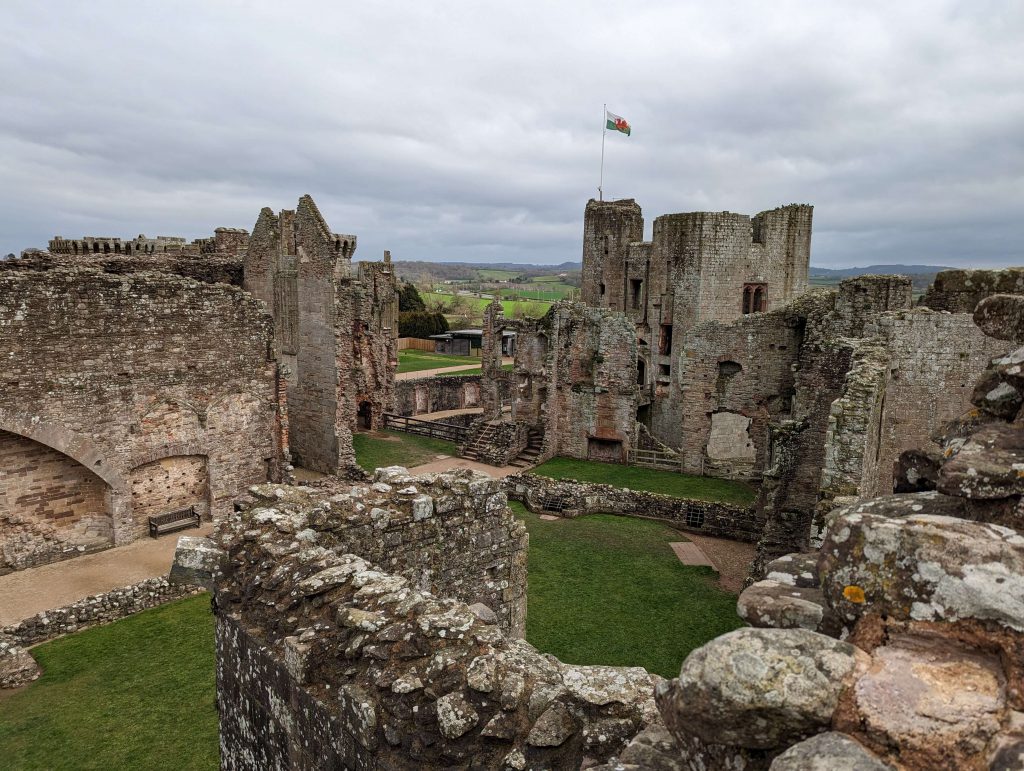
Situated to the left of the Pitched Stone Court, the Fountain Court derived its name from a marble fountain that once stood at its centre. The fountain featured a white horse on a black marble base and was accompanied by a flowing stream of water.
Williams’s son, Edward Somerset, 4th Earl of Worcester inherited Raglan in 1589 and continued developing the magnificent castle; he added a large formal water garden at the northern end of the lake, with a summerhouse and the moat walk around the Great Tower. Edward was regarded as an excellent horseman and received the prestigious royal office of Master of the Horse. He was also a royal favourite of Queen Elizabeth I and her successor King James I.
At the onset of the First English Civil War in 1642, Raglan Castle was in the possession of Henry Somerset, the 5th Earl of Worcester. Although Henry was advanced in years by this point, both he and his son, Edward, Lord Herbert, were staunch Royalists. In October 1642, King Charles I dispatched his own son, Prince Charles, on a fundraising mission of supportive areas, beginning with Raglan Castle. The successful visit resulted in Henry being elevated to the position of the first Marquess of Worcester.
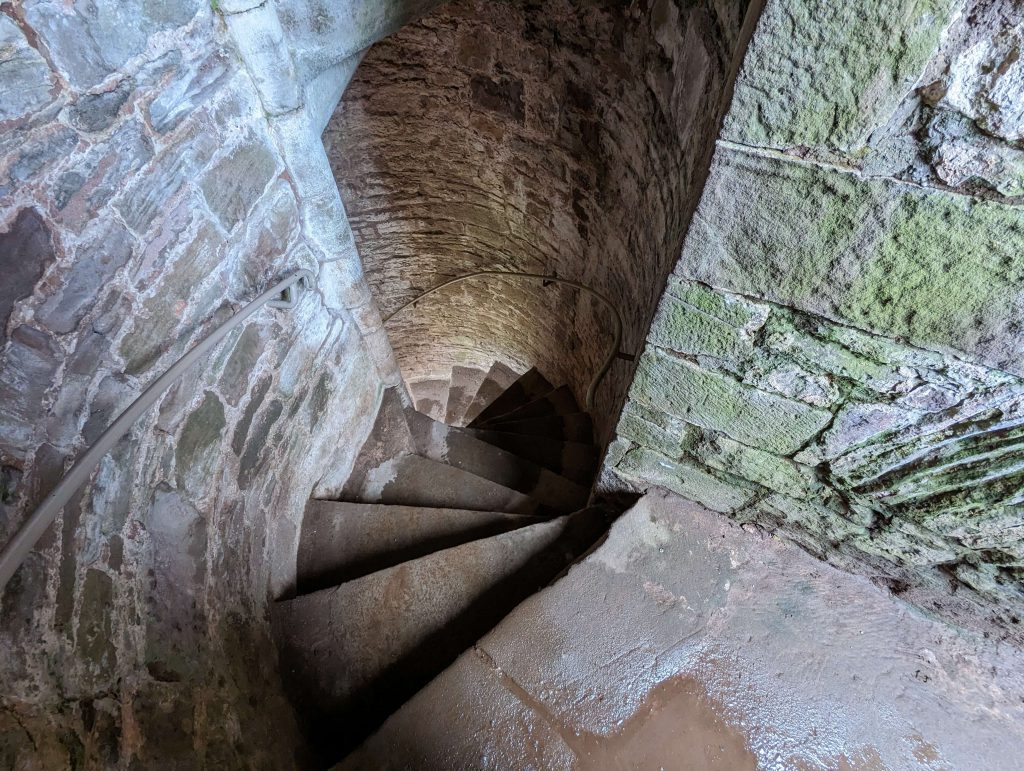
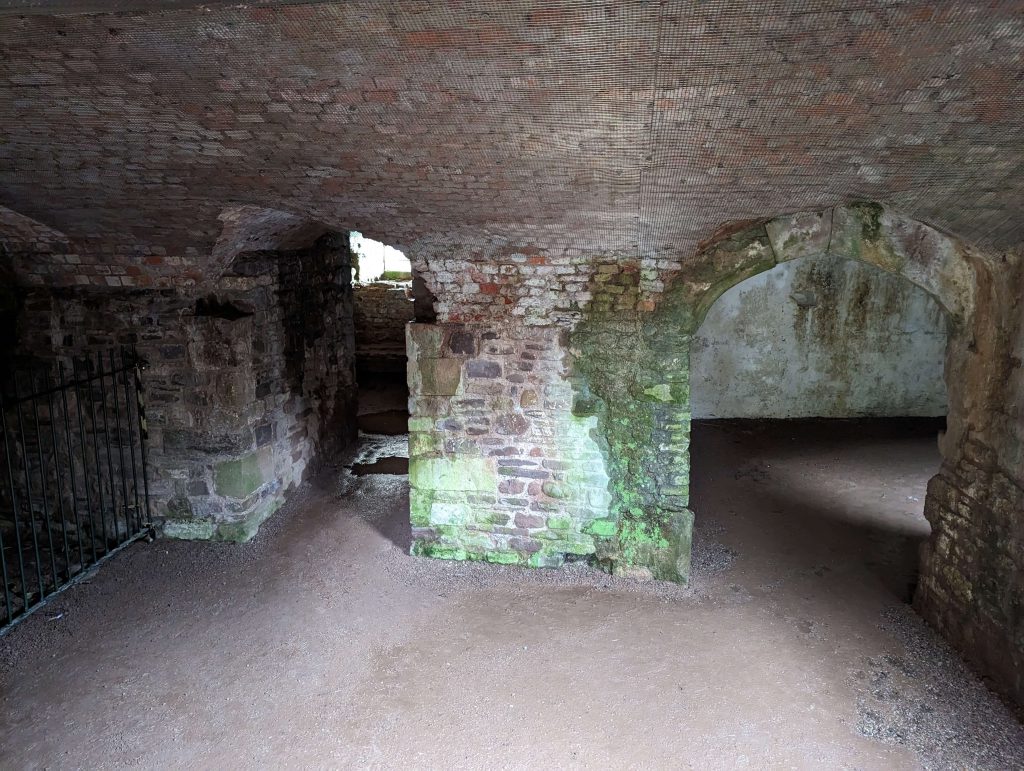
In anticipation of a potential siege, Raglan Castle’s defences were fortified, and modern earthwork bastions were constructed around the castle. Additionally, a powder mill was built, and a garrison of approximately 300 men was established. Heavier artillery was installed in the bastions, while lighter cannons were positioned in the castle towers.
Lord Herbert departed from the castle to join the campaign against Parliament, but he returned intermittently to obtain additional funding for the war effort. Charles I himself visited the castle twice, first in June 1645 after his defeat at the Battle of Naseby, and again in 1646 when he indulged in a game of bowls on the castle’s green. As the Royalist cause neared military collapse, the Marquess began transferring some valuables, including the oak panelling from the parlour, several plaster ceilings, and numerous paintings, to his brother at the nearby Troy House for safekeeping. Lord Herbert was eventually captured in Ireland, and an attack on Raglan Castle appeared to be imminent.
In expectation of a siege, the castle garrison was increased to around 800 soldiers. The avenue of trees outside the castle gates was felled, and adjacent buildings were demolished to prevent their potential use by Parliamentary forces.
The first Parliamentary army, commanded by Colonel Morgan and Sir Trevor Williams, arrived in early June and demanded the castle’s surrender. When this was refused, a siege ensued, lasting throughout the summer months. In August, General Fairfax arrived with additional Parliamentary forces and renewed calls for the castle’s surrender. The Parliamentarians dug trenches towards the castle and used them to move mortars forward, including the famous “Roaring Meg”, which brought the castle’s interior within artillery range. Faced with a hopeless situation, the Marquess surrendered the castle on 19 August on relatively generous terms for the garrison.
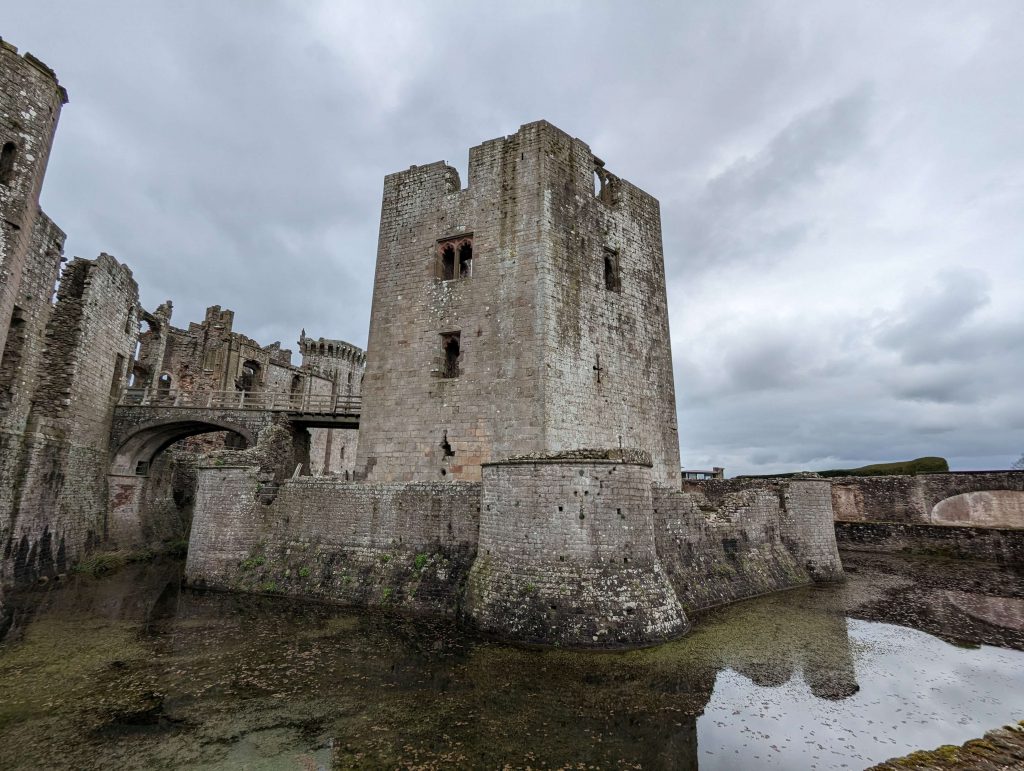

The Marquess himself was arrested and sent to Windsor Castle, where he died shortly afterwards. Informed shortly before his death that Parliament had granted his request to be buried in the family vault at Windsor, the Marquess remarked, “Why then I shall have a better castle when I am dead, than they took from me when alive.”
Following the siege, Fairfax ordered the entire castle to be slighted (destroyed). However, the castle’s fortifications proved too formidable, and only a small portion of the walls were ultimately destroyed.
Despite some initial losses after the siege, the Somerset family was able to recover most of their possessions, including Raglan Castle, by the time of the Restoration of Charles II. However, Henry Somerset, the 3rd Marquess, chose to focus on rebuilding his other estates at Troy and Badminton, rather than Raglan Castle.
During the first half of the 18th century, the castle’s condition continued to decline as the Somerset family allowed their stewards to quarry stone from the castle for repairs to other estate buildings. In 1756, Henry Somerset, the 5th Duke, put an end to the practice of quarrying stone from the castle, and instead decided to turn it into a tourist attraction. The first guidebook for the estate was published in the early 19th century.
Raglan Castle is still owned by the Somerset family and the family were granted the title of Duke of Beaufort 1682. In 1938, the castle was placed in the care of the Ministry of Works, and it is now maintained and managed by Cadw, the Welsh government’s historic environment service and is open to the public to visit and enjoy for a small entrance charge.
One last random fact on Raglan Castle, if you are a fan of the hit BBC show ‘Merlin’ then you might recognise the castle. Raglan castle was used for filming and is included in numerous episodes.
Click below to explore Raglan Castle with us

